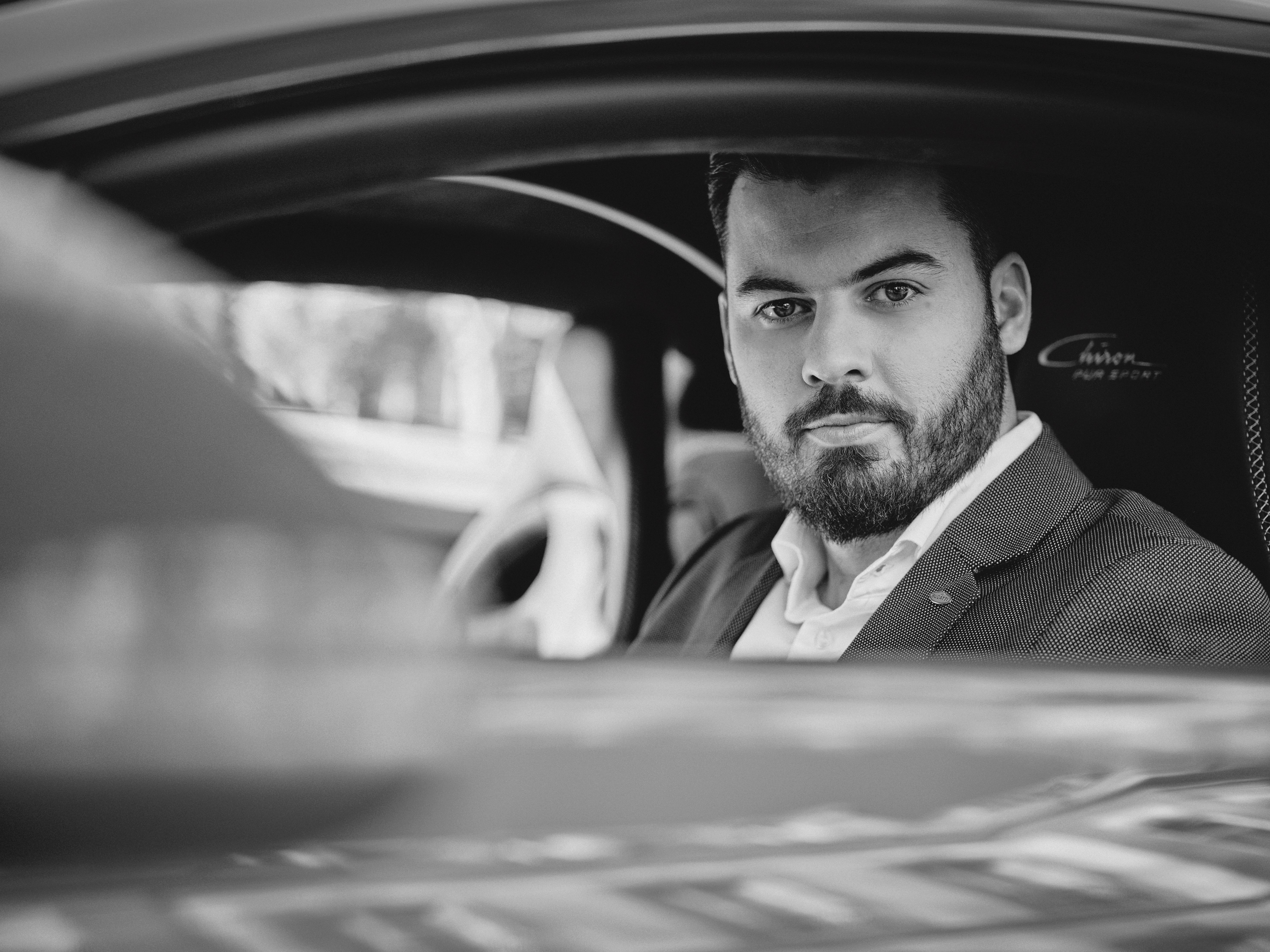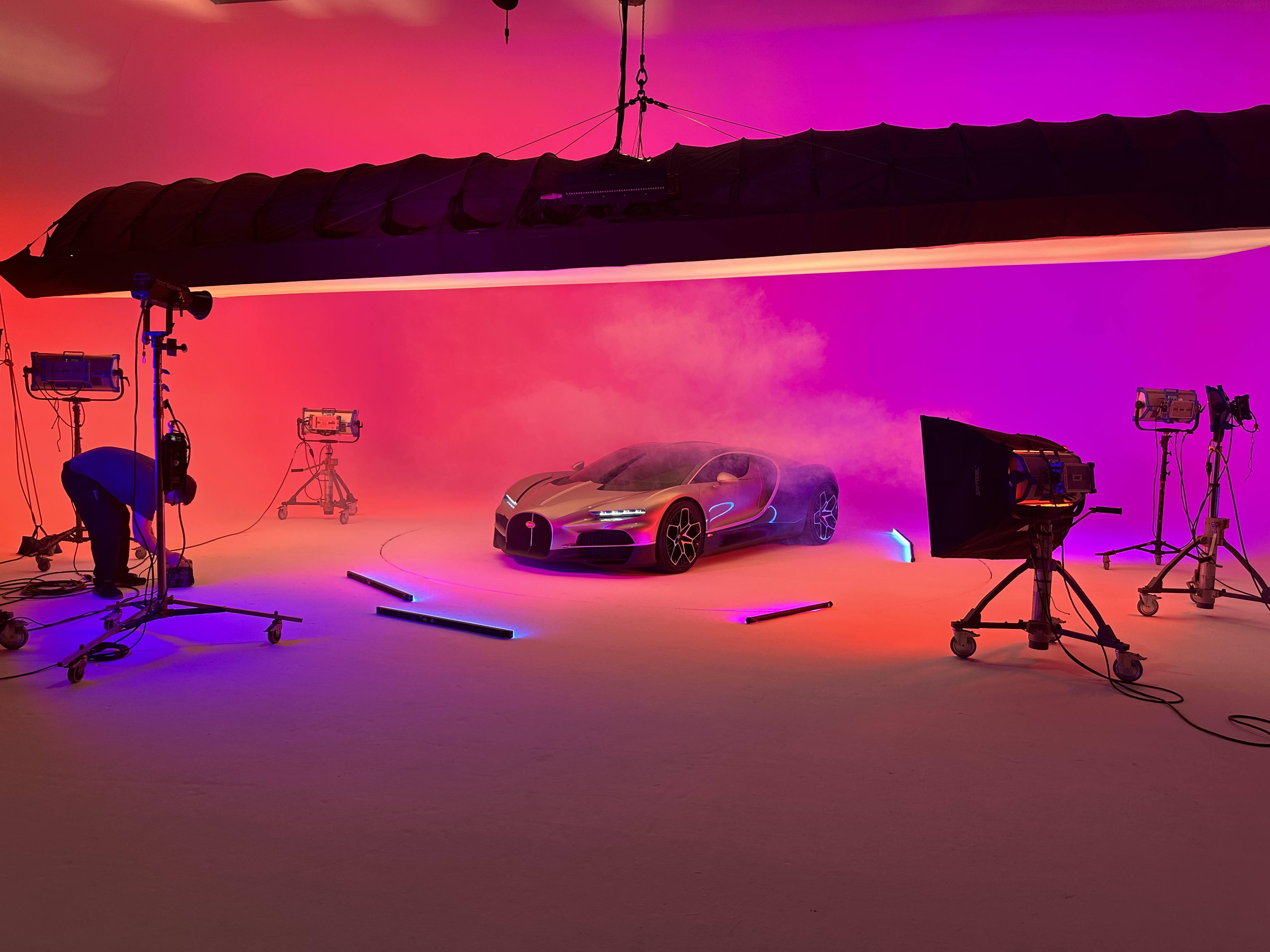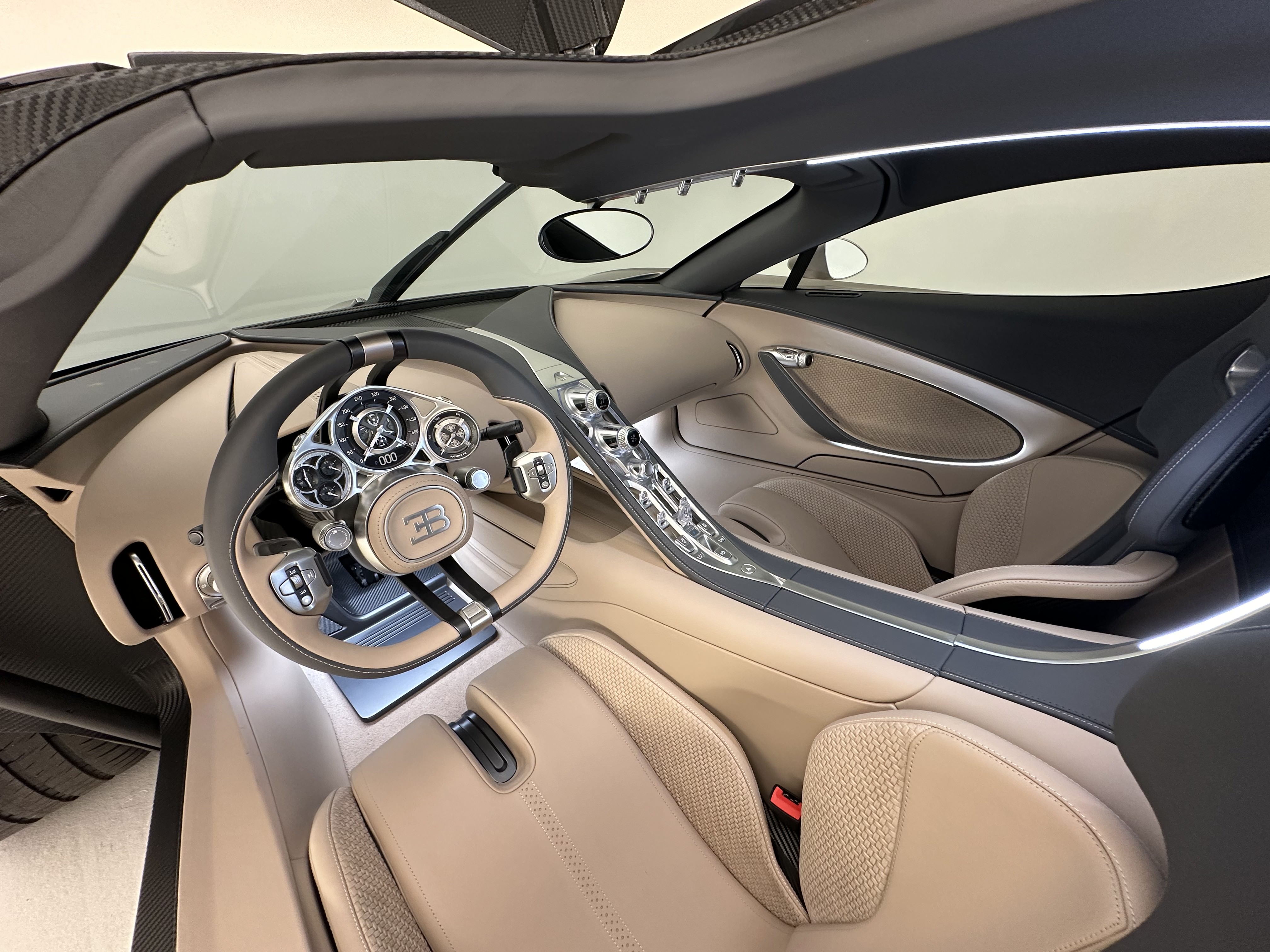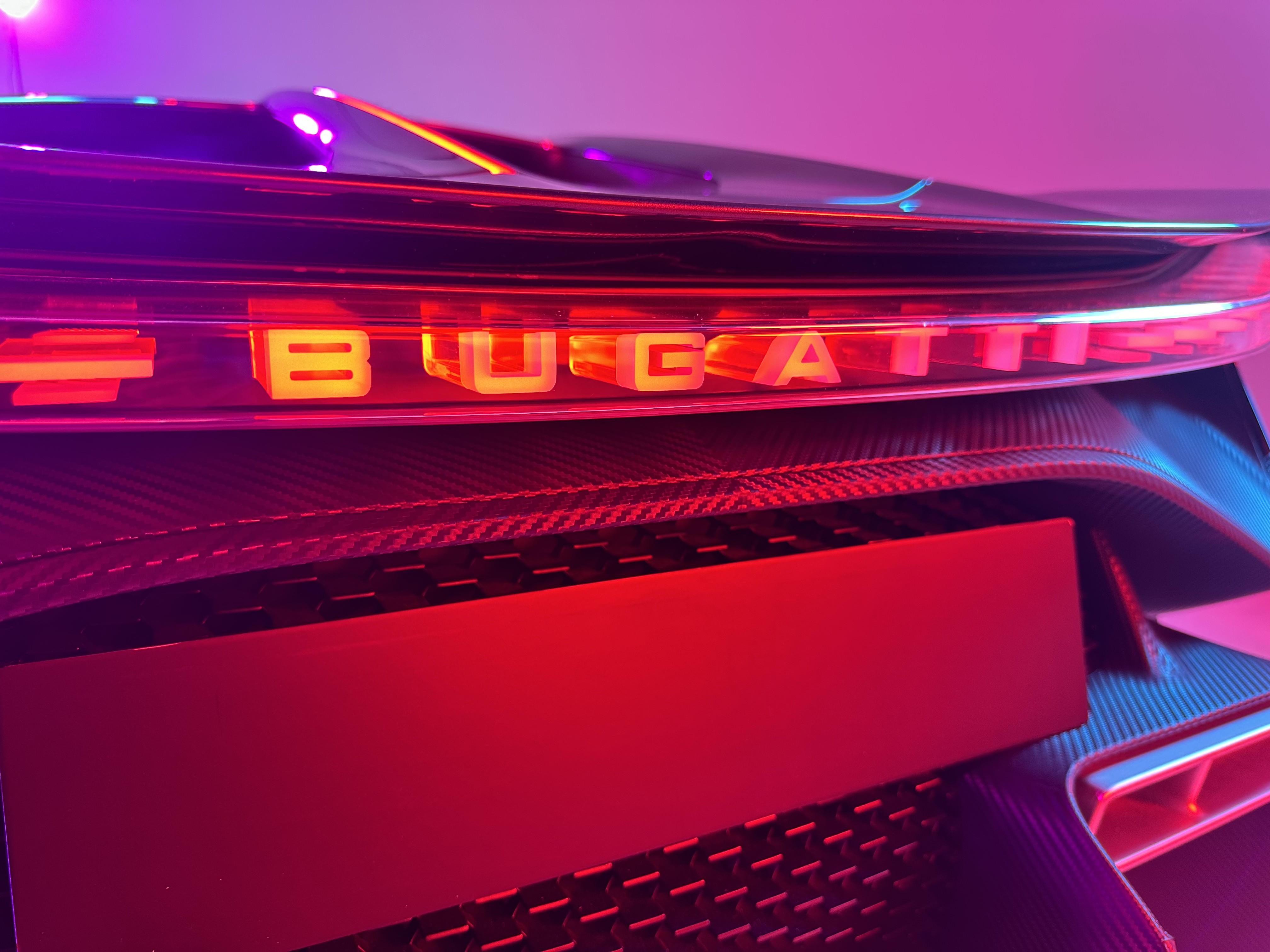How Mate Rimac Created A Hypercar Masterpiece With The New Bugatti Tourbillon
While the industry steamrolls toward an EV future, Bugatti revolts with a V16-powered, chronograph-inspired unicorn.

The origin story of how Mate Rimac became part owner and CEO of one of the most legendary automotive marques on the planet is the fantastical stuff of Disney films.
“That’s the difficult thing: to swim against the current. But to have the balls to do it is another thing.”
When it was first announced the young entrepreneur behind a nascent, but clearly promising, Croatian start-up was inheriting Bugatti, the automotive world was in shock—as was Rimac himself. Of course the presumption being that this electric-vehicle wunderkind would lead Bugatti’s transition into the zero-emission realm. The evolution seemed as preordained as a Tom Brady Super Bowl.
So when we arrived at the Long Beach studio where Bugatti held its super-secret debut of the Tourbillon for a small group of journalists—and we first laid eyes on this wild machine boasting a broiling, naturally aspirated V16 at its heart—we couldn’t believe our eyes. Had the world gone mad? Had VW plucked the electric wizard behind the super futuristic Nevera to helm the development of an anachronistic internal combustion vehicle?! That’s like commissioning Buckminster Fuller in hopes of building a geodesic dome, and instead being issued blueprints a year later for a waffle maker.
So when we had the chance, we grilled Mate Rimac on the details of this journey—how he was first offered the position to helm Bugatti, how quickly he decided on the unexpected direction to lead the historic marque and exactly how much pushback he received from unsuspecting VW execs when presented with his brilliant yet potentially harebrained plan.

I’m fascinated with the moment you were first offered to possibly lead Bugatti, one of the most storied automakers on the planet.
The way I got involved with Bugatti was with the previous CEO, Mr. Stephan Winkelmann, now the CEO of Lamborghini. He came to us as a supplier, and the idea at that time was to develop the next Bugatti to be an electric two-plus-two sport coupe SUV. And actually the idea was to repackage the Nevera powertrain and build it for that car. So they tried to make it work, but it was difficult to get the funding inside Volkswagen to do it.
And then at the beginning of 2020 I was invited by Volkswagen management to talk about Bugatti, and I didn’t know what they wanted to talk about. I thought they wanted to hear my opinion about that project. So I came, opened my laptop and showed the concept of how we could develop that car—not just the powertrain, but maybe how we could help with other stuff. And in the middle of the discussion the guy said, “So what do you think about taking over the company?” And I thought it was a glitch in the Matrix, I heard wrong, it was a joke, something. You cannot believe it. To me, it’s difficult to understand today. I completely ignored it. It never happened.

He offered you Bugatti and you pretended you didn’t hear the question?
I totally ignored it. I didn’t even tell anybody because I thought it was so out of comprehension, so out of the realm of reality, that something must be wrong. Or the guy is not aligned with the rest of the company, it just cannot be. So I never told anybody. And three months later, the guy calls me back and says, “Hey Mate, I made this offer to you. You never responded.” And I’m like, “Oh, that actually happened?” And then I started thinking about it.
Once you started considering, when did the idea to go full anachronistic start bubbling?
When he said it the second time on this call, I was like, “Oh, okay, this makes so much sense actually. This makes sense for Bugatti, makes sense for us.” And it was actually a beautiful win-win for everyone. And as the next Bugatti before I came was supposed to be another thing, not a hypercar, we were looking at everything.
At that time I couldn’t work with [Director of Design] Frank [Heyl], or with [Bugatti President] Christophe [Piochon] yet, you have rules that you cannot work with a company that is in competition with you before you actually do the transaction. So I worked with Rimac’s team on the initial idea. And we were looking at SUVs, four-seaters, full electric, range-extended with turbines, combustion, everything. Everything was on the table. Then at some point we were like, “Okay, the car has to be a hypercar. Bugatti needs a hypercar.”
And then the idea was, why not just hybridize the Chiron? And actually Bugatti had concepts of that before, but then it was clear the car is already quite heavy, and if you just add batteries and hybrid power it’s going to be super heavy. It’s going to be compromised. You also don’t really have the proper space; the gearbox is taking the space for the battery. You have to start from scratch. So once I started thinking about it, then I wanted to have a really special combustion engine.

By the time you settled on a combustion solution, were you already set on a V16?
Yeah. I remember the last meeting to seal the deal was with the CEO of Volkswagen at the time, Herbert Diess. I came with this little 3D printed model, and it had a V16, two electric motors in the front, battery in the middle. I presented to him what I want to do with the brand. So I came there with that concept, and it never changed.
And that’s really important because we had clarity of direction from day one. We never went left or right, so we could efficiently say, ‘This is the goal, just a straight line to the goal.’ Within that straight line you have obstacles you need to jump over, of course, but we know many car programs that went left, right, completely changed during the development, and they take forever.
I’m sure VW Group imagined you would lead a fully electric platform. How much pushback was there?
That took some convincing. Everybody thought like, “Okay, Bugatti needs to go electric. Everything is going electric, so these guys can make it happen.” That was the thought process. And then Volkswagen handed over the collaboration with us to Porsche because Porsche already had shares with us. And then I came with this idea.
But Porsche had developed the 918 years before and they were like, “You have no idea what you’re getting yourself into. This is so difficult. Are you crazy?” Like, “Okay, you developed an electric car, but you have no idea what it takes to develop a hybrid, emissions and all that. Are you insane? It’s never going to work. It’s going to be too expensive. Make an electric car.” That was their position.
Yeah, “Dance, monkey.”
Yeah, but I was very insistent that that’s the wrong thing for Bugatti. So I said, “Trust me, we can do it, we have the right team. Let me do my thing.” You know? That’s the right thing for Bugatti. So we managed to convince them, and here we are.
There must have been a moment, or many, where they seriously regretted handing Bugatti over to you.
Yes, but now looking at this, when you see the customer reactions and so on, it’s like exactly what it should have been. That’s the difficult thing: to swim against the current. When I did the Nevera it was against the current—nobody was doing electric sports cars at that time. And now we swim against the car that we have created ourselves with this. So it’s easy to say now, “Oh, it was the right thing.” But to have the balls to do it back then is another thing.

I can only imagine the meetings that they had about you behind closed doors. You’re proposing a naturally aspirated V16, and they’re like, “We chose you because we wanted an electric car.”
This crazy 30-year-old. Exactly.
Once you established the V16, how quickly was the additional idea developed that you were going all-in on this anachronistic analog mode and shedding all digital screens?
For me, it was very clear. So one of the first things we did when we could all officially work together, I took the team to the Swiss watchmakers. Because that was the narrative from the beginning. First was Audemars Piguet—they were great but not set up to make an automotive system, so we found other partners. But this analog notion was there from the beginning. I think we clicked very early on, Frank and Christophe and me, like, “Okay, we go in this direction.”
“The car has to be a hypercar. Bugatti needs a hypercar.”
Have you started track testing yet, like the Nürburgring, etc.?
We started driving this month and are building the test prototypes now. We are driving it on dynos and test benches. The engine has been running for about two years now. In November ‘22 I was in Cosworth when they had the full engine on the dyno. We started with the four-cylinder engine, then the sixteen-cylinder, and then we have a full test rig with the three electric motors, battery, and engine. And we are running that already for a long time. The full car, we are just finishing the first prototypes. But usually, like with other supercars, you would have unveiled two years before this stage. So we are pretty advanced with the car for the reveal. When we reveal it publicly [on June 20], the car will drive around.
Follow Deputy Editor Nicolas Stecher on Instagram at @nickstecher and @boozeoftheday.
